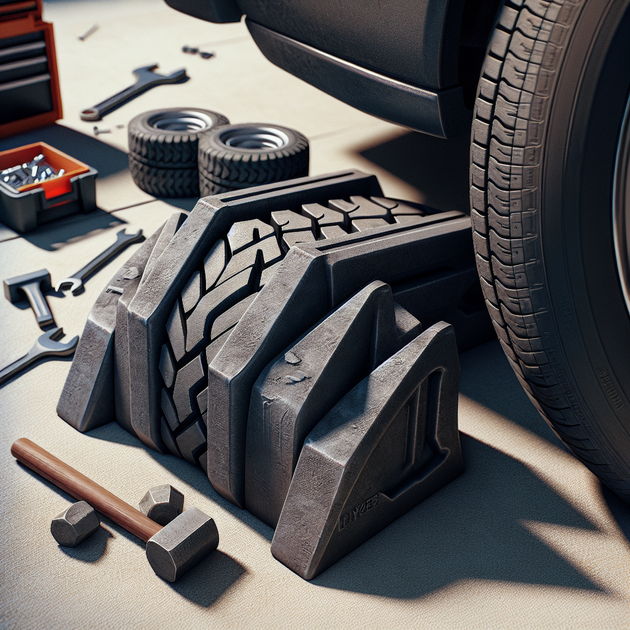Is Skipping Wheel Chocks a Risk Worth Taking?
Ever noticed someone working under their car and wondered if those little rubber or metal blocks—wheel chocks—are actually doing anything? It might seem like overkill to some. But the truth is, ignoring wheel chocks during any sort of vehicle maintenance could mean putting yourself in real danger.
A question popped up online recently about whether it’s truly safe to skip using wheel chocks when jacking up a car. Someone even shouted across the street to warn a neighbor’s kid about this very thing. So, is this concern blown out of proportion—or is it backed by solid safety facts?
What Are Wheel Chocks and Why Do They Matter?
Wheel chocks are simple wedges placed snugly against a vehicle’s tires to stop unwanted movement. They’re found in every professional shop and are recommended by most major automakers. You’ll spot them used anywhere from steep driveways to airplane runways.
When you lift your car with a jack or put it on jack stands, gravity and physics don’t take a break. Even on what looks like flat ground, cars can shift suddenly—especially if there’s an accidental nudge or if the parking brake slips. A rolling car is unpredictable and can cause serious injury or property damage.
According to the National Highway Traffic Safety Administration, taking extra steps like using wheel chocks is one of the simplest ways to prevent accidents during DIY maintenance.
The Real Dangers of Skipping Wheel Chocks
It’s easy to shrug off advice about safety gear until something goes wrong. Here’s what can actually happen if you skip the wheel chocks:
- Unexpected Rolling: Even with the emergency brake engaged, cars can creep if weight shifts or brakes fail.
- Jack Stand Failure: If your vehicle moves even slightly while on jack stands, it can slip off—potentially crushing whatever (or whoever) is underneath.
- Sloped Surfaces: Garages and driveways aren’t always as level as they look. A tiny incline increases risk.
- Transmission Type Doesn’t Matter: Whether you’ve got an automatic or manual transmission parked in gear, there’s always some play.
- Insurance Concerns: Many policies might not cover damage resulting from improper maintenance procedures.
For more on home garage safety tips beyond just using chocks, check out this guide from Popular Mechanics.
Anecdote: The Day It Almost Went Wrong
There was this time a friend decided to rotate his tires without bothering with wheel chocks because his driveway looked “pretty flat.” In the middle of swapping out one tire, he accidentally knocked into the side of his sedan. The car shifted just enough that it started rolling toward him—and only stopped because the curb caught it. He was lucky; many others aren’t.
Safety experts agree that most at-home accidents happen because folks skip “the little things.” According to an article from Consumer Reports, using a $10 set of wheel chocks could be what saves your life—or at least your bumper.
Best Practices for Using Wheel Chocks
If you want maintenance days to go smoothly (and safely), make sure these habits are part of your routine:
- Always use wheel chocks on both sides of at least one axle—front or rear tires depending on which end is lifted.
- Select sturdy rubber or metal chocks rated for your vehicle’s weight.
- Avoid makeshift substitutes like bricks; they can crumble or slip.
- Double-check that the ground under both the jack and the chock is solid—not gravel or loose dirt.
- If working alone, check everything twice before sliding under the vehicle.
For more details on proper lifting techniques and essential gear like jack stands and ramps (which should never replace proper use of wheel chocks), see this comprehensive guide from Family Handyman.
The Bottom Line: Don’t Take Shortcuts With Safety
So—are concerns about skipping wheel chocks unwarranted? Not at all. Using them isn’t being overly cautious; it’s just practical self-preservation. Whether you’re changing oil in your driveway or fixing brakes in a garage, those little blocks could be what stands between you and disaster.
Next time you see someone skipping this step—or feel tempted yourself—remember how quickly things can go sideways without warning. Wouldn’t you rather spend an extra minute securing your wheels than risk months recovering from an avoidable accident?
What other simple safety steps do you swear by when working on cars at home?

Leave a Reply